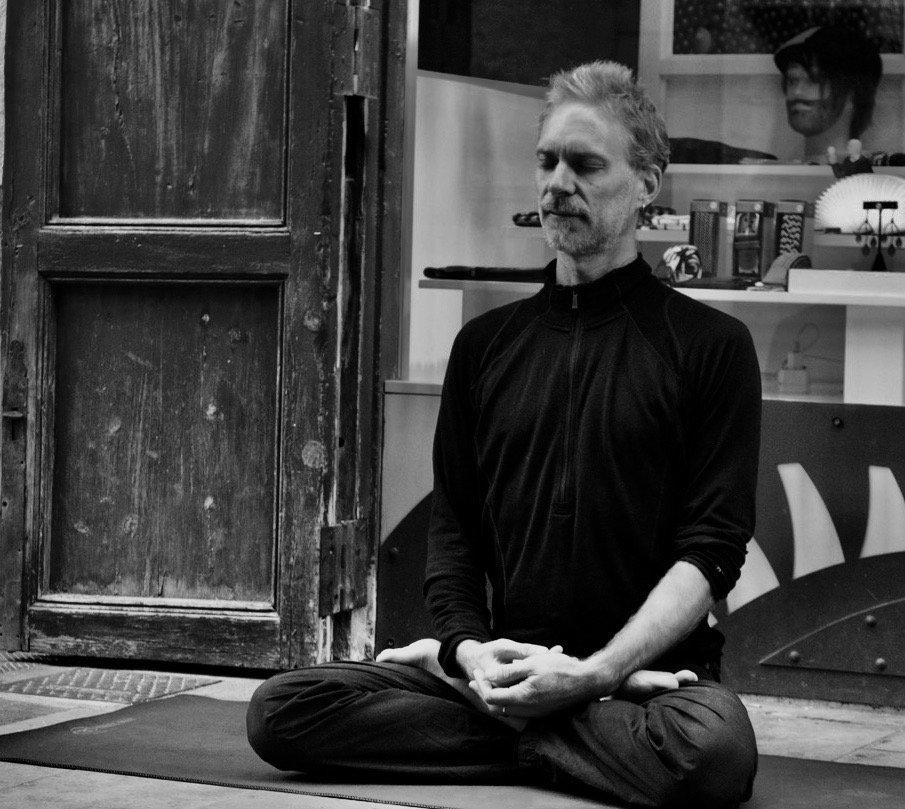 Modern life entails a great deal of movement from one activity to another and often several activities at the same time! All this leads to a certain level of stress and dispersion and as a consequence superficiality and lack of satisfaction. In this article I want to advocate the practice of sitting meditation as a basic tool to help us realise what is really important for us.
Modern life entails a great deal of movement from one activity to another and often several activities at the same time! All this leads to a certain level of stress and dispersion and as a consequence superficiality and lack of satisfaction. In this article I want to advocate the practice of sitting meditation as a basic tool to help us realise what is really important for us.
The journey begins by becoming physically still. We cultivate awareness; to see, to feel, to appreciate the details and the subtleties of whats happening within and without. More specifically we develop awareness of our consciousness; we develop awareness of the mind. The Buddhist meditation tradition is based in an ancient teaching of the Buddha that says:
“Experiences are preceded by mind, led by mind, and produced by mind. if one speaks or acts with an impure mind, suffering follows even as the cart-wheel follows the hoof of an ox (drawing the cart). Experiences are preceded by mind, led by mind, and produced by mind. if one speaks or acts with a pure mind, happiness follows like a shadow that never departs.” (Dhammapada)
We are able to differentiate between what are called skillful (generous, friendly, open) and unskilful (tight, averting, closed) states of mind and to work with these. The invitation is to follow the light and askew the dark, allowing ourselves to grow and evolve more creatively.
Following the tradition we have the model of samatha/vipassana which is the process through which we pass as our meditation practice develops. It can be translated as calming (samatha) and seeing clearly (vipassana).
Samatha is the cooling, calming down or quietening of our mind. We develop this by sitting quietly and following the breath or developing kindness towards ourselves and others. As the mind naturally becomes quieter, more malleable and more absorbed. This is a natural process that can happen when we engage in activities wholeheartedly and enthusiastically.
In Vipassana we see directly how unskillful tendencies are frustrating even hurting and entrapping us and we learn how to let go of these tendencies. We can drop habits and tendencies that lead to strife. We grow up in the sense of grow into a happy, or at least more contented, responsible and free human beings.
Meditation is best approached as a gradual process and for this reason I would recommend a daily meditation practice. I would also recommend meditating with others creating a mutually supportive environment.
Here is a simple approach based in awareness of the body, breath and heart/mind. We develop these 5 elements in our session of say 20 minutes;
1. Posture – we are looking for a stable posture with a clear stable foundation where we can give weight to the earth. Your could easily sit in a chair. With good alignment we can let go into the structure of the body and sit with the minimum muscular effort. Some discomforts can be expected. Cultivate an awareness of the space and ambient around oneself, listening with the eyes closed. For example, being aware of the background city environment. We cultivate a felt sense of how the body actually is, not an idea of how the body is. There is an ongoing process of coming back to, returning to the body and breath.
2. Breath in the belly – give attention, say 50% of your attention the the breath, feeling the breath in the abdomen, the rise and fall of the belly. This anchors our attention low in the body, earths and grounds our energy. The rest of our attention is with the posture itself and the emotional landscape of our experience.
3. Emotional landscape – in the practice we start to open up to and become familiar with our inner world. The overall attitude is one of embracing all. We become receptive and open to the internal movement of emotion, the flow of thoughts, images and experience. Awareness of the breath and body simultaneously allow us to stay grounded and spacious and not get lost in particular thoughts and emotions.
4. Kindness – we connect with and cultivate an attitude of kindness, patience and generosity, a sense of being content with what is. Easy to say, but can be difficult to do, as a lot of us don’t like ourselves. Look for elements of yourself you appreciate and like.
5. Faith or confidence – we can sit with a quality of nobility and elegance, almost a regal quality. We touch the quality of self worth, valuing the practice and the time we give to the practice. We can have confidence that we too are “workable”, whatever is going on for us.